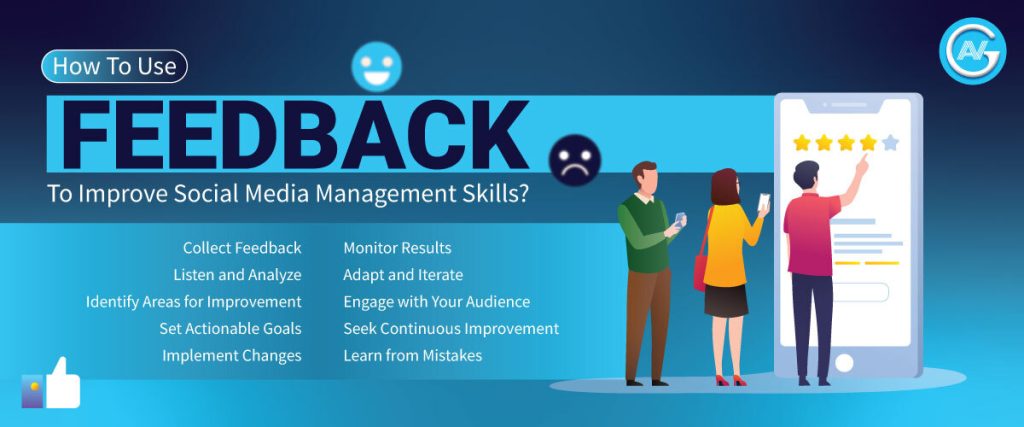
Feedback is essential for improving social media management skills as it offers valuable information about whatever is or is not functioning correctly. The following represent a few strategies for improving social media management skills :
1. Why Feedback Matters
Feedback provides an outside perspective on our activities, habits, and performance that heightens our self-awareness. It helps us determine our strengths and areas to focus on to improve our skills. However, constructive feedback can motivate us to work towards development and realizing our full potential. Feedback is responsible for our actions and decisions.
” We all need people who will give us feedback. That’s how we improve.” – Bill Gates.
Maintaining your Google Business Profile is important. These profiles are considered to be the main determining factor for local businesses.
2. How To Give Feedback
Feedback offers accurate and clear instances of the habits or actions you are targeting. This makes sure that everyone remembers the specifics. You should promote a two-way dialogue where the recipient can clarify anything or raise questions. You need to handle it optimistically as feedback presents an opportunity to support others’ growth. While offering feedback, how that individual is doing and if additional support is required. In addition to this, you should be specific, timely, balanced, fair, constructive, respectful, open and receptive when providing feedback to your team members, clients, or collaborators.
3. How To Receive Feedback
- Maintain a positive outlook and be open to accepting different perspectives while receiving feedback.
- Give their comments some thought.
- Think about the ways you can use it to change for the better.
- Stay focused on what is being said and avoid interrupting.
- Inquire more to make sure you understand the feedback.
- Establish objectives and improve the target areas in the feedback provided.
- Try not to be sensitive to feedback.
- Remember that accepting comments offers an opportunity for development and advancement. Thanks to those giving you feedback for taking the time to help it grow and improve.
- Lastly, be reflective and responsive.
4. How To Use Feedback Tools
Collecting constructive comments is important to improve your work. Feedback tools are software or platforms that can help you collect, analyze, and manage feedback from various sources. Choose the feedback tool that best fits your needs. A few feedback tools for social media management are Hootsuite, Sprout Social, and Type Form. Look out for trends, repeating patterns, and areas with a lot of variance. This can include deciding which feedback categories to gather, configuring alerts, etc. Modify how you gather and evaluate feedback in light of your observations.
5. How To Improve With Feedback
- Feedback is useful if you act upon it.
- Develop your strategy to get better and pick a few important topics to focus.
- Do not assume anything.
- Get clarification and further details from the individual providing feedback.
- Try not to limit your attention to specific points.
- Examine how the comments are perfect for a comprehensive understanding of your strengths and growth areas.
- Consider your performance and how it matched with the feedback.
- Again, do not limit your attention to areas that need work.
- Discuss the benefits and strong points validated by the feedback.
- Feedback is a normal part of work, and you can analyze its impact with continuous seeking, giving, receiving, and acting on it.
Final Thoughts
What AVingenious’s Perspective About Feedback
According to AVingenious experts, feedback is highly beneficial for growth and development. Positive or helpful feedback gives us information about how others see our business and the areas to work to become more successful. Accepting feedback with a positive attitude allows us to improve as we learn new techniques and simplify our processes. Feedback tools can also help you gather feedback from multiple channels, such as surveys, polls, reviews, comments, messages, or analytics. You can also use them to organize and visualize data trends, patterns, sentiments, or ratings.
